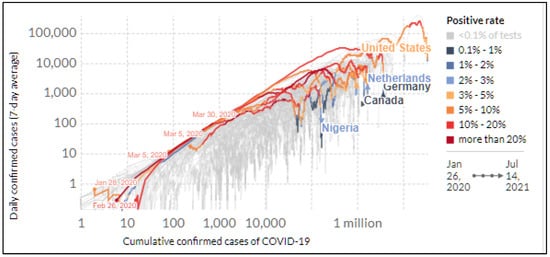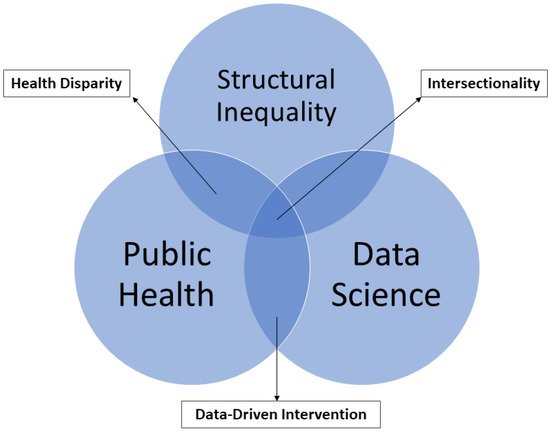Health disparity is an unacceptable, unjust, or inequitable difference in health outcomes among different groups of people that affects access to optimal health care, as well as deterring it. Health disparity adversely affects disadvantaged subpopulations due to a higher incidence and prevalence of a particular disease or ill health. Existing health disparity determines whether a disease outbreak such as coronavirus disease 2019, caused by the severe acute respiratory syndrome coronavirus 2 (SARS-CoV-2), will significantly impact a group or a region. Hence, health disparity assessment has become one of the focuses of many agencies, public health practitioners, and other social scientists. Successful elimination of health disparity at all levels requires pragmatic approaches through an intersectionality framework and robust data science.
The coronavirus disease 2019 (COVID-19) outbreak caused by severe acute respiratory syndrome coronavirus 2 (SARS-CoV-2) was declared a pandemic by the World Health Organization on 11 March 2020 due to its growing prevalence, particularly its increase in morbidity and mortality over a wide geographic area
[1], and has since generated considerable attention. The infection rate varies across geographic areas, indicating spatial and regional disparities. Evidence of regional and within-country variations in coronavirus infection and mortality has been well documented
[1][2][3][4][5]. Shortly after the first outbreak in Wuhan, China, several other American and European countries exhibited clusters of COVID-19 infections. Not long after, the United States became a significant hotspot of COVID-19 morbidity and mortality.
Figure 1 highlights the 7-day average cumulative cases of COVID-19 in five countries: the United States, Canada, Germany, the Netherlands, and Nigeria. Recently, when the distribution of COVID-19 vaccination became more accessible in most communities in the United States, the daily hospitalization cases due to infection and related death decreased significantly
[6][7][8][9]. However, overwhelming evidence indicates differences in infection and associated death rates across different populations
[2][3].
Figure 1. Cumulative confirmed global cases of COVID-19 (data source:
www.Ourworldindata.org accessed 13 July 2021, Ritchie et al.
[10]).
The recent COVID-19 pandemic revealed many things ranging from the possibilities of remote learning/working, virtual recruitment, and service delivery such as telemedicine. The pandemic has further shown additional evidence of health disparity in our society, particularly in health outcomes and access to health care systems. As a background for this paper, Figure 2 shows the intersection between structural inequality as the root cause of health disparity, public health, and data science. We believe that the adoption of intersectionality and data science approaches would help foster data-driven interventions in addressing health disparities.
Figure 2. The intersection between structural inequality, public health, and data science.
Health disparity is an important theme that has generated much interest from different domains as well as a significant public health debate that must not be overlooked in any society and in chronicling the health outcomes of COVID-19, particularly in the United States. This entry paper examines the concept of health disparity within the intersection of public policy, public health, and data science (Figure 2). Furthermore, this contribution explores the definition of health disparity and determinants of health regarding COVID-19 from different countries, with specific emphasis on high-income countries with diverse populations such as the United States and the United Kingdom. For example, the United States has the most extensive published papers on health disparity, mainly from racial and ethnic, social class, gender, and sexual orientation angles, and serves as a reference point for research on racial and health disparity.
In addition, this paper provides a general overview of the implication(s) of health disparities for achieving viable public health policies. Considering different approaches to measuring health disparity, this study presents how the field of public health and other allied (health) disciplines could leverage the power of data science such as geographic information science/systems (GIS), machine learning, and artificial intelligence to help solve some of the societal issues including the current COVID-19 pandemic. In addition, this paper contributes to the field of spatial epidemiology and public health by showing how data science and intersectionality frameworks can be fused to improve general/public health. Finally, this paper concludes with some expert-based recommendations toward reducing health disparity.


